“In most organizations, innovation isn’t hampered by a lack of ideas, but rather a lack of noticing the good ideas already there. It’s not an idea problem; it’s a recognition problem.”
I like this observation from David Burkus in the HBR a couple years ago.
There can be a lot of friction when ideas move from conception to execution. The mindset needed to vet and evaluate ideas is fundamentally different than either the mindset needed when coming up with ideas or the mindset needed when executing ideas.
Walt Disney famously thought of those three mindsets as three distinct personalities: the Dreamer, the Realist, and the Spoiler. According to my friend (and Disney alum) Paul Williams at Idea Sandbox, Walt Disney treated ideas as progressing sequentially through those three compartmentalized stages.
The Dreamer mentality specializes in blue sky thinking without constraints, the Realist mentality puts practical structure to the ideas, and the Spoiler asks the hard questions and kicks the tires. We need all three mindsets. But we need those mindsets at the right time and in the right way.
As Paul Williams put it:
“When we brainstorm alone and in groups – too often – we tend to fill the room with a Dreamer or two, a few Realists, and a bunch of Spoilers. In these conditions dream ideas don’t stand a chance.”
To draw lines between those mindsets even clearer, Walt Disney apparently dedicated different physical rooms to each mindset. These rooms helped prompt what mindset was required at each stage. They helped ensure that innovation remained both creative and practical.
Here are a few related cartoons I’ve drawn over the years:
“Culture of Innovation” January 2018
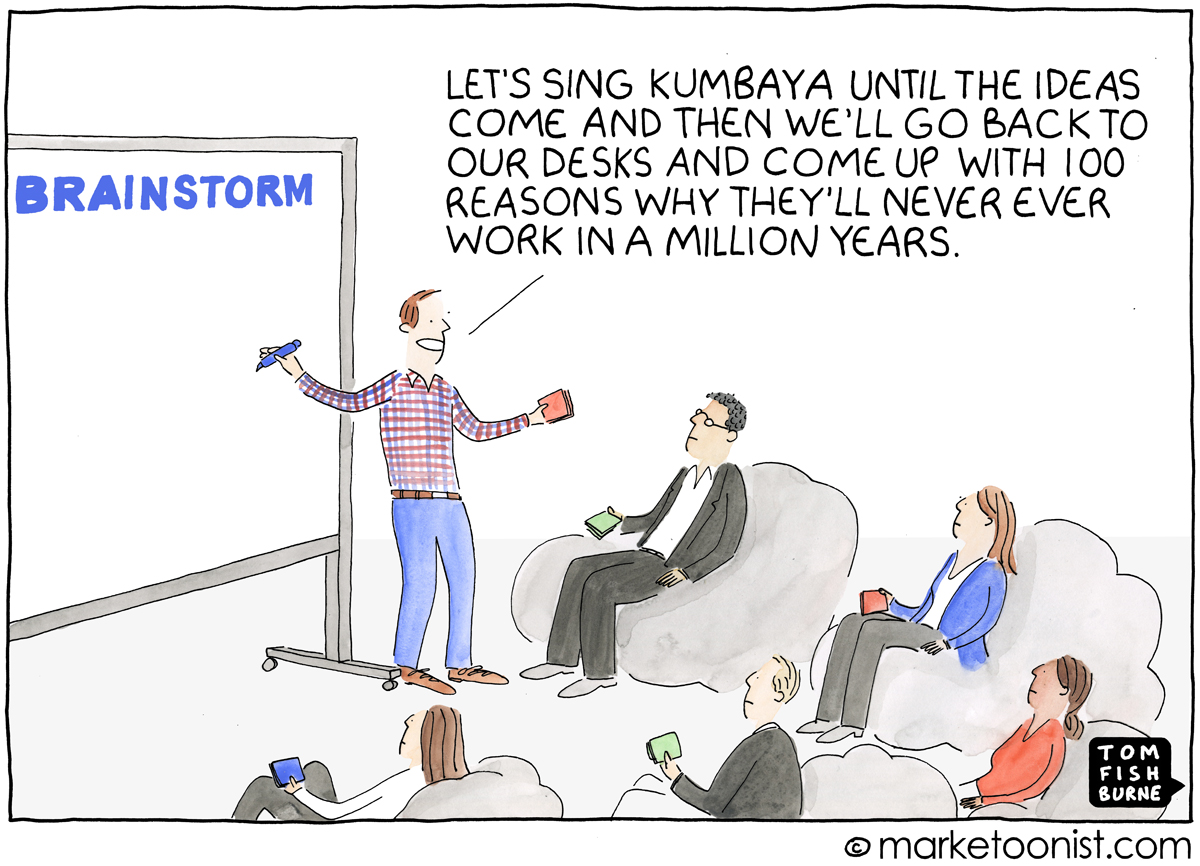
“Open Innovation” August 2013
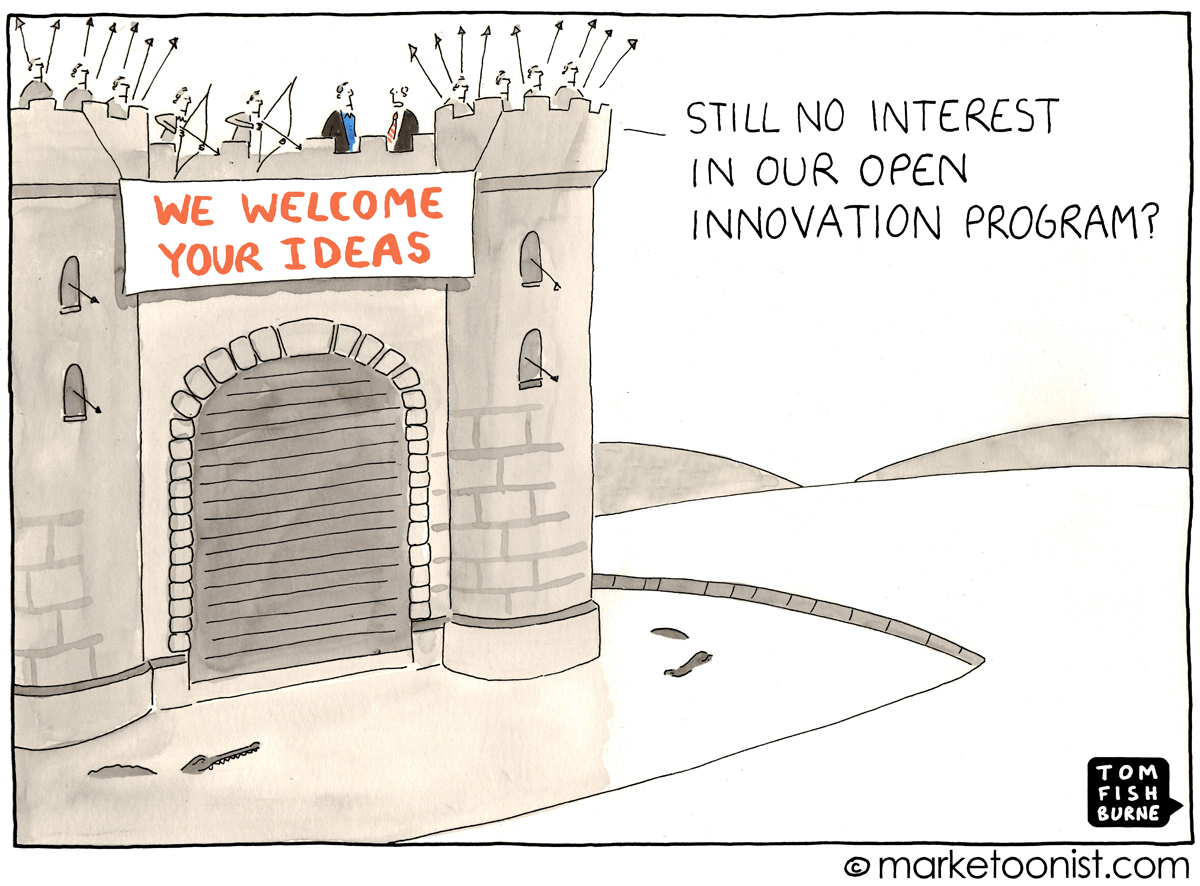
“Innovation Funnel” March 2011
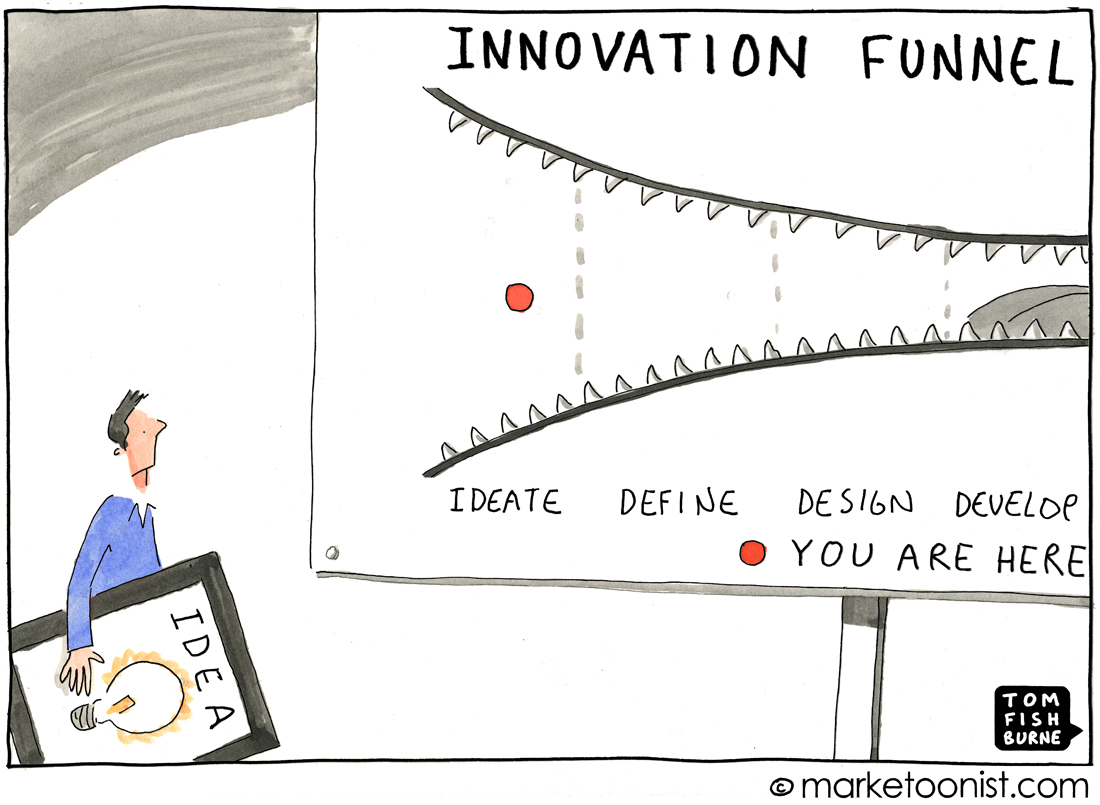
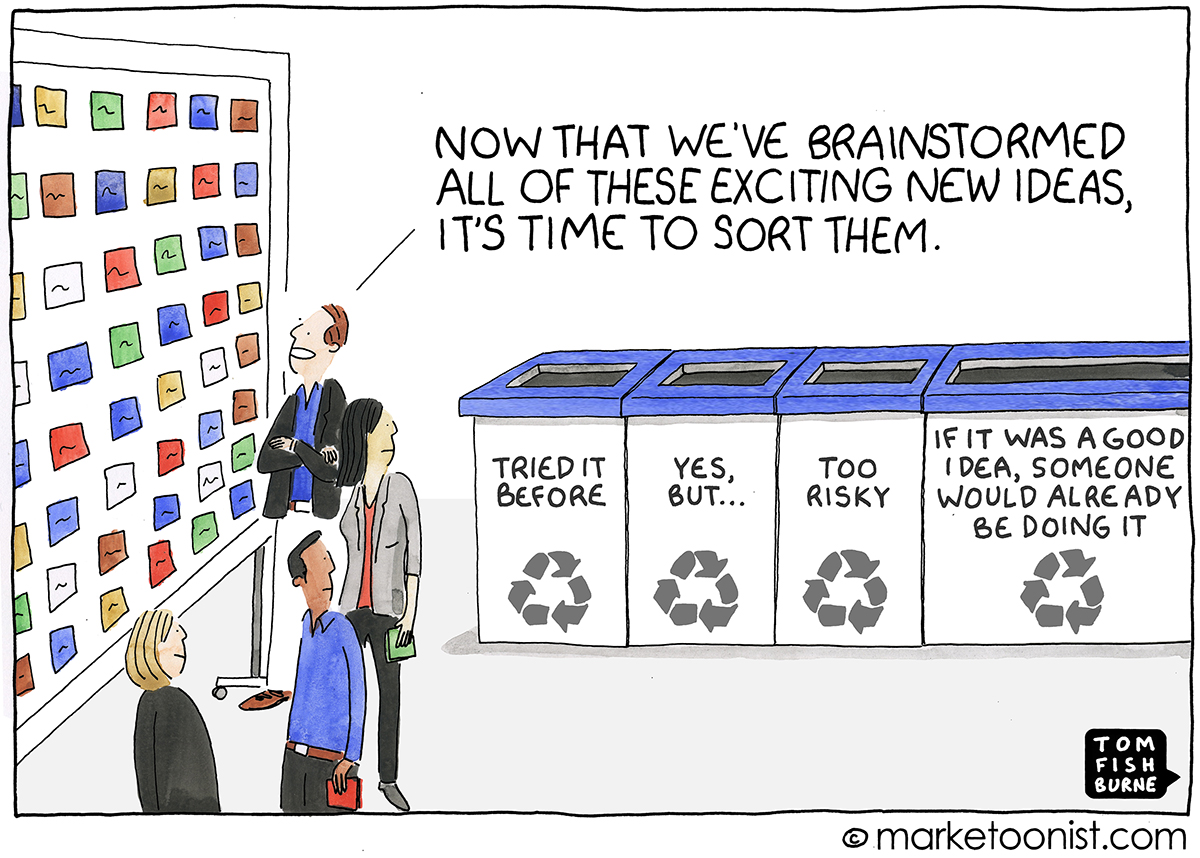

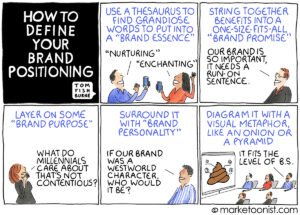

Paul (from Idea Sandbox) says
Hey!? Thanks for the shout-out, Tom! I love that Walt Disney practice. It is one of the most visited posts on Idea Sandbox.
There is also something in the process where we decide, “Okay, we are no longer in the building phase, we are now in the doing phase.” Often ideas and programs get mired down in constant “building” or “criticism.” Built up with scope creep… or torn down by nay-sayers when we should be in the planning or implementing phase!
Another good discipline is using “Six Thinking Hats” created by Ed de Bono. His phases are: Facts (white hat) > Explore Positives (yellow) > Look for Problems (black) > Hunches/Intuition (red) > and Alternatives (green). He also has a referee of sorts (blue hat) to make sure people stick within the “hat” for each phase.
Part of the benefit is to establish… “Okay, we just finished the black hat ‘devil’s advocate’ stage, we’re DONE tearing it apart, now onto red hat where we review ‘feelings, hunches and intuition’ about the idea or plan.
Like the Disney practice, breaks the process into distinct, focused stages!
-Paul
Tom Fishburne says
Love it, Paul, many thanks!
Vijay Pandey says
I belong to Sales and marketing community and have gone through the pain, failures and subsequent disappointments. I loved the cartoons very much which show the true conditions and why many great ideas will never reach its ideal fate. As creativity can not be demanded by ‘ brute force’ , ideas also can not be generated in a conference/ outdoors with harsh time limits, learnt the hard way.
The biggest challenge was to assemble the vetting team from most of operating people who would rather kill ideas.
Jim Smith says
All of those characters reside in all companies. Throw in the corporate bully a sure to decline new ideas person. The way to solve this situation is to stop letting HR or some other middle player run the show. You cannot imagine the results we get by having the CEO ask for the ideas, using a third party to capture the data and take them to the person who can fix what the suggestion is focused on. If we get the feeling that the idea is good, but the individual is not willing to take the action, up to the next level and in some cases taking an officer to the CEO for arbitration. Too many folks are treating this like it’s some kind of game and “this too shall pass”. Well, when we pass the game is over and the employees and investors win. In one case with this ten-week approach, employees delivered a sustainable $300 million SG&A reduction, a $200 million capital reduction, a $45 million inventory reduction, sent a couple of corporate bullies home and reduced previously announced layoffs by 60%. Over a hundred policies were killed or altered and some out of nowhere revenue ideas were executed. THe ideas are ther, so are the blockers in the culture, politics and silos and until you have figured out a way to go right past them the employees will simply ignore the opportunity. That’s why we make changes nearly every day and announce them. There is nothing like killing a sacred cow to get their attention. One sacred cow the CEO killed as a result of the employee input cause the suggestions to jump from 800 to 4700 in seven days. This whole thing with expert surveys going through HR, speeches, authors, and consultants working with HR is absolutely silly. For two decades and billions of dollars, there’s been no reported improvement. Time to up the game, put HR on the bench and get the only person in the company who can make change happen involved, the CEO. For example: https://chiefexecutive.net/employee-engagement-ceos-actually-listening/